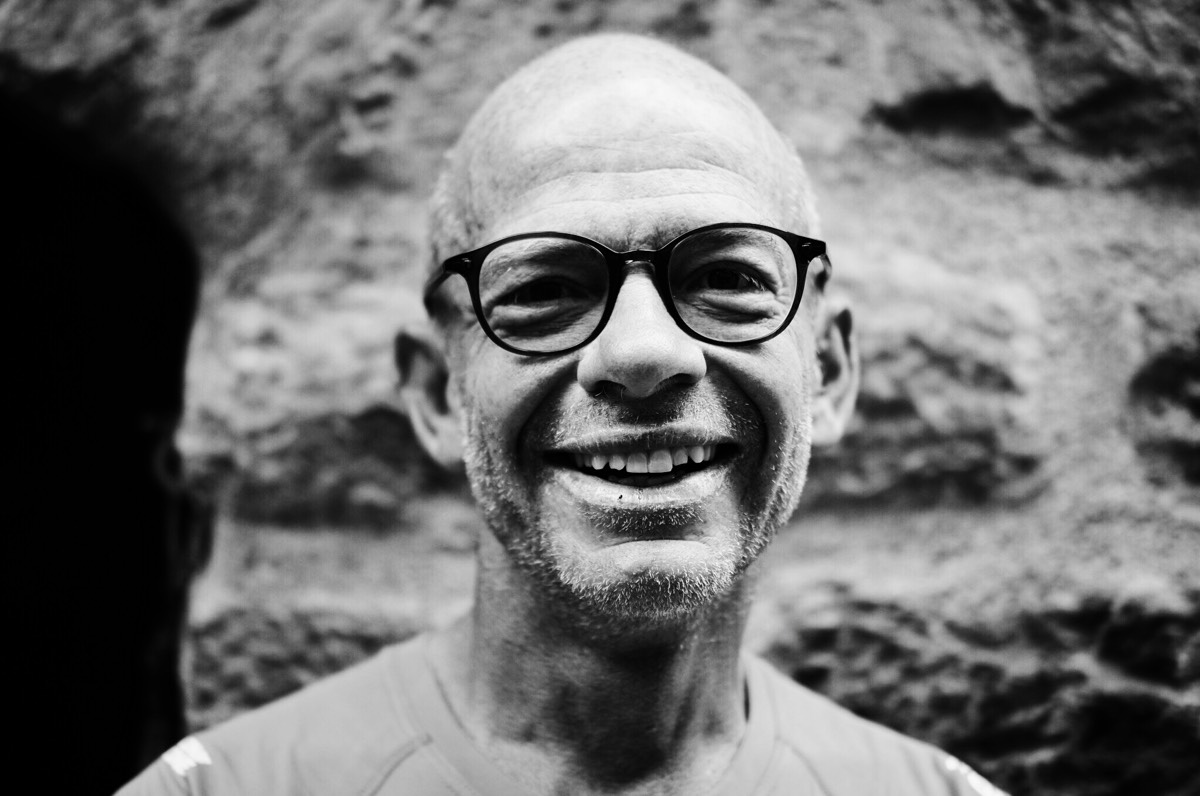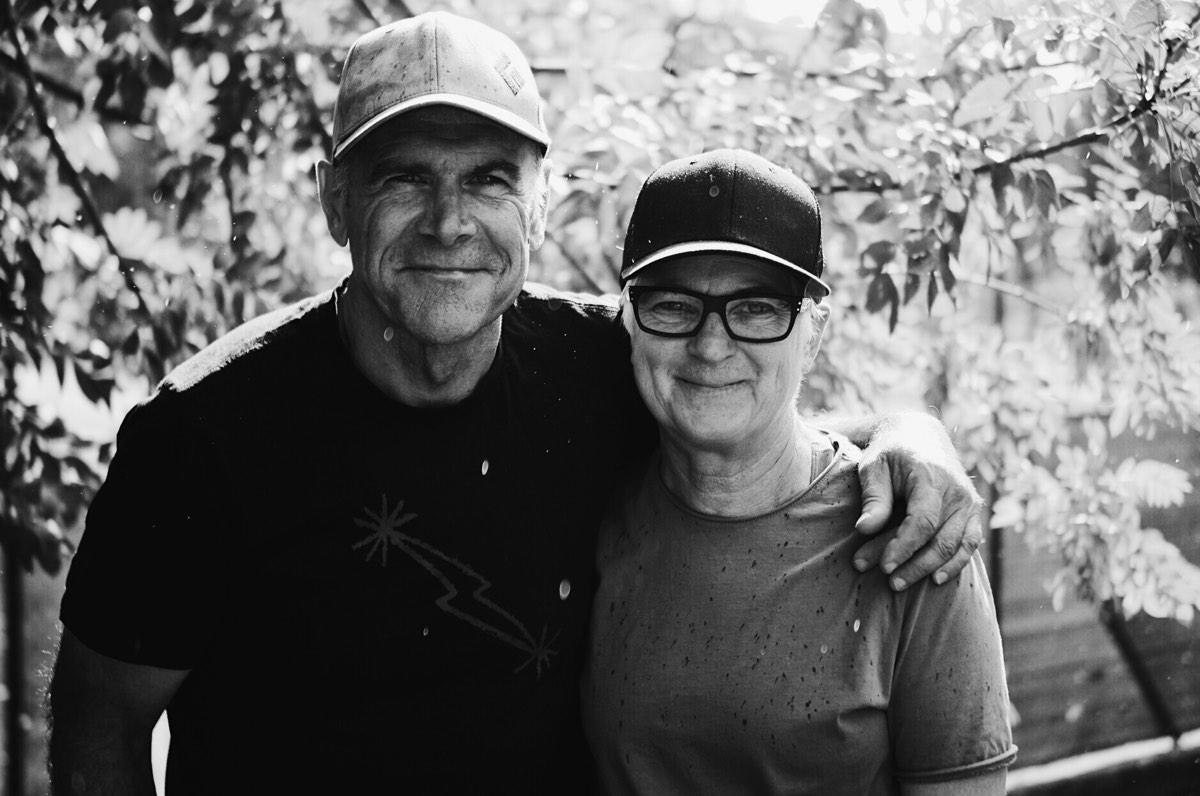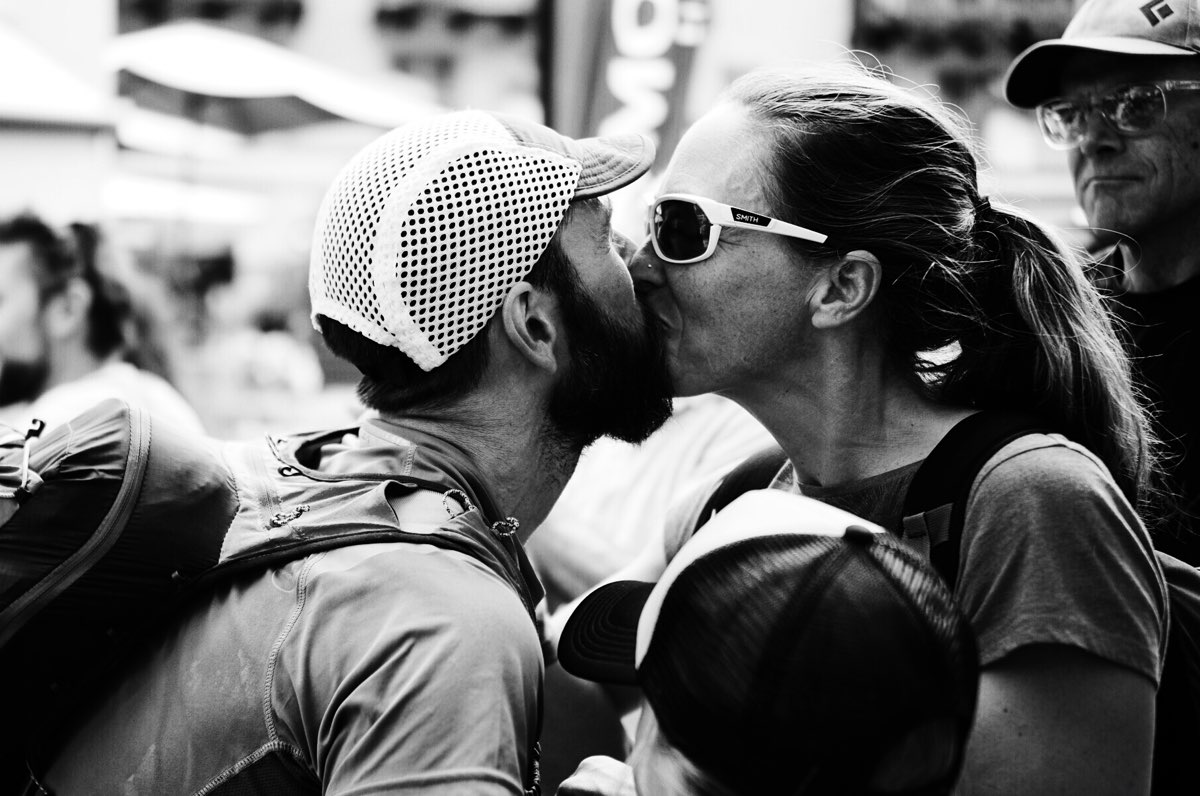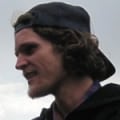The faint smell of cigarette smoke stirred me from my sleep. Lying on the side of the trail, I peered over to Eugeni through my left eye, my right one crusted shut from conjunctivitis. My body was feverish and in a great deal of discomfort. It was well past 1 a.m. on our second night out on the trail, and I needed these occasional five-minute catnaps to keep me standing. Eugeni hadn’t slept a wink yet, but seemed un-phased, seated a few feet away from me on a moonlit boulder. He took long, deep drags of his cigarette while staring absently into the darkness. As our gazes met, he smiled and queried, “We go?”
We’d stopped not long before at the Rifugio Coda. This mountain hut is perched high on a magnificent ridge above 2,000 meters altitude, a little over halfway on the 200-mile Tor des Géants route. It’s a checkpoint on the course run by some hardy and kind mountain folk. The wind on the ridge had been vicious as we’d approached the shelter. In my heavily depleted state, I could barely stay on my feet and asked for a bed as soon as we’d arrived. The race rules allow for a two-hour stay in huts to rest and restore, but I told Eugeni that 30 minutes would be enough.
He stayed in the main room chatting with the hut keepers, while I tucked myself under a thick wool blanket in the back. The main issue I’d been dealing with since before the start of the race was a severe ear infection that was gradually worsening. I was demanding a lot of my body, too much perhaps.
This scene took place in September of 2017, during my second attempt at the Tor des Géants. Shortly after our cig/nap break, my condition worsened and I fainted on the trail down to the tiny village of Niel. I decided that the merits of finishing the race weren’t worth the potential long-term impacts to my health, so I stopped.
In 2014, I’d completed the race six weeks after tearing my quadriceps at the Hardrock 100. Needless to say, finishing that year had been a strenuous affair, but was far outweighed by three main factors. First, the sheer splendor of the course will leave no mountain enthusiast indifferent. The Tor is by far the most beautiful event I’ve ever done, mile for mile. Second, the incredible kindness and warmth of the people of the Aosta Valley is truly special. Third, I met Italian runner Luca shared with him the entire second half of the course. Ironically, we met on the descent from Rifugio Coda. We formed an accelerated bond of friendship over our mutually compromised states, which led to a particularly powerful and profound experience together.
While both races had been fulfilling in their own way, I came back this year with the hope that all the pieces would come together, and that on my third try, I could race to my potential.
My body and mind were in a great place. I had the best crew I could ask for with my mom and my good friends Roch and Catherine. I had the gear and route dialed and was eager to get to work. Then, on the flight over, I caught a nasty virus and came down with bronchitis the week of the race. I tried everything to heal: drinking water, eating good food, getting plenty of rest, and staying as positive as I could to try to shake the sickness, to no avail.
I still decided to start, yet I knew deep down that even completing the course would be an immense challenge. I’d pulled over on the side of the trail to lie down for 45 minutes only a few hours in, with my body rebelling in fits of coughing.
It already seemed pointless to continue, but I’d need another 27 hours to finally feel okay with stopping. On a personal level, I could easily come to terms with ending my race this early since the immediacy of my discomfort would be much better served by laying in a bed and sleeping off the pain. I felt guilty though, for all the resources, money, and people I’d dragged into this moment and I had a responsibility to honor the privilege of being here by at least giving it an honest try. Though I know that all my friends and family care about in such circumstances is my well being, it is still difficult to be rational under stress and pressure, even when it is self-imposed. I learned that while it’s worthy to cultivate grit and determination, it’s equally as important to know when to be humble and bow down.
In that regard, the Tor is a good teacher. Or perhaps the sickness is the teacher. I don’t really know anymore. I guess I’ll have to go back to find out.
Call for Comments (from Meghan)
- When was the last time quitting something was the right choice for you, even if either your mind or your body wasn’t ready to?
- Have you ever pushed on to the finish of something when you probably should have stopped earlier, resulting in harmful consequences?
- How hard is it to balance between doing too much versus too little, however you define those terms for yourself?




